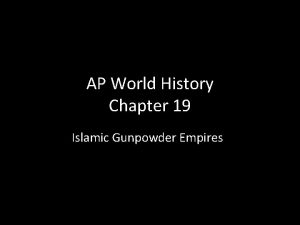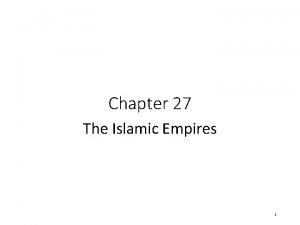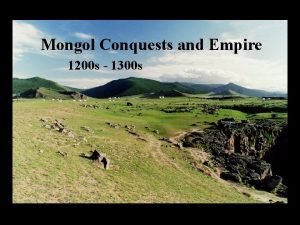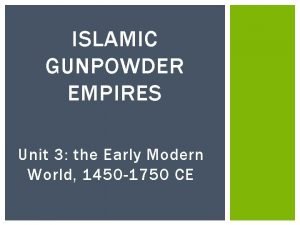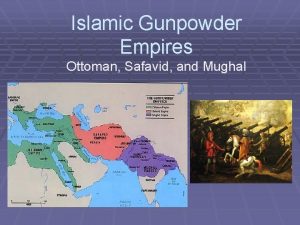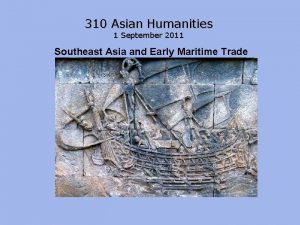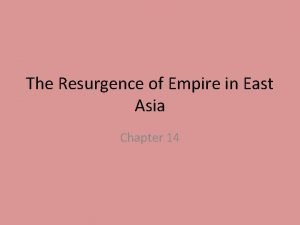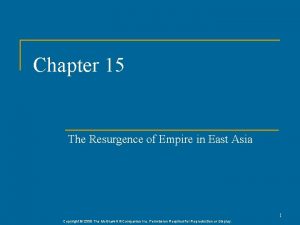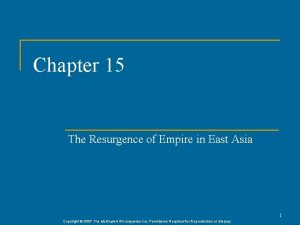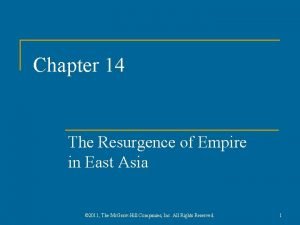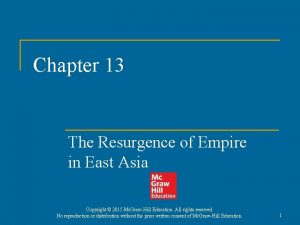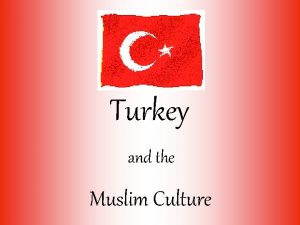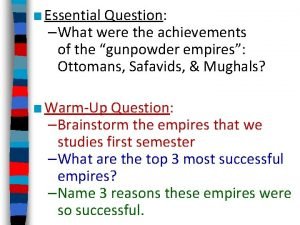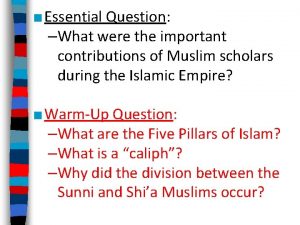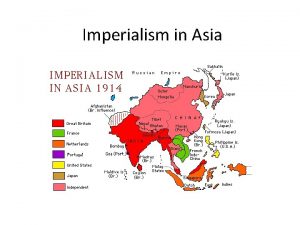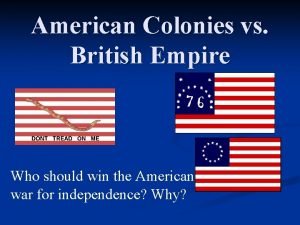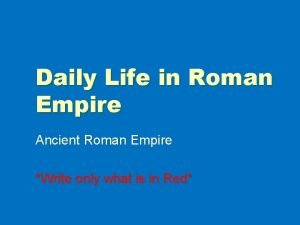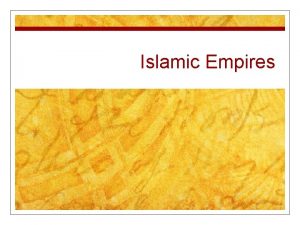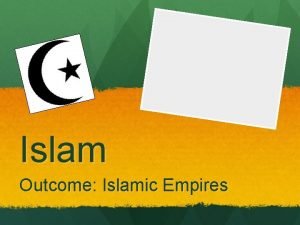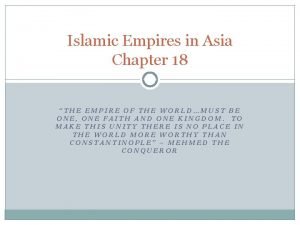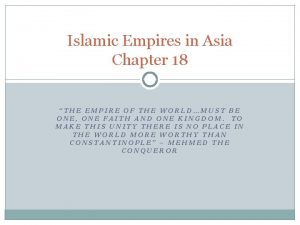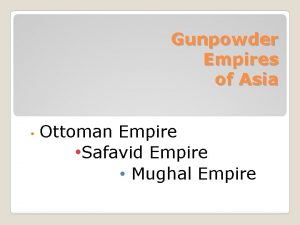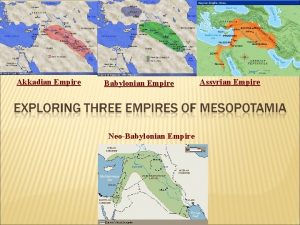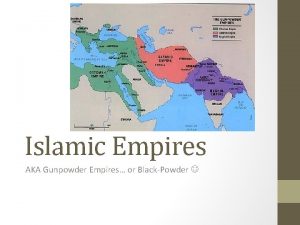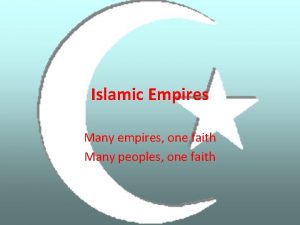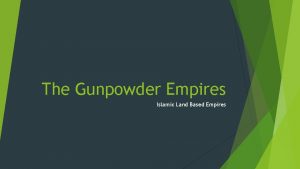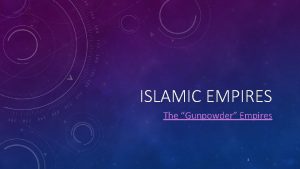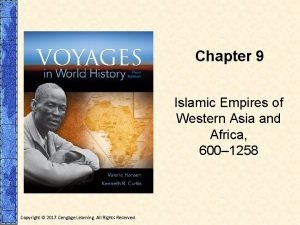Islamic Empires in Asia Chapter 18 THE EMPIRE



















- Slides: 19

Islamic Empires in Asia Chapter 18 “THE EMPIRE OF THE WORLD…MUST BE ONE, ONE FAITH AND ONE KINGDOM. TO MAKE THIS UNITY THERE IS NO PLACE IN THE WORLD MORE WORTHY THAN CONSTANTINOPLE” – MEHMED THE CONQUEROR

Ottoman Empire

Rise of the Ottomans �Ghazis – Warriors for Islam �Anatolia (Modern Day Turkey) Osman – creates the Ottomans Sultan – one with power Gunpowder and cannons Compassion, tolerance

Timur – Timur the Lame �Restoration of Mongol Empire �Military genius & tactician �Burned Baghdad and won Battle of Ankara Slowed Ottoman advance "Till the advent of Hitler, Timur stood forth in history as the supreme example of soulless and unproductive militarism“ – John Saunders

Recovery & Expansion � Murad II � next period of expansion defeated the Venetians, invaded Hungary, and overcame an army of Italian crusaders in the Balkans � Mehmed II Took Constantinople in 1453 – renamed Istanbul Strategic importance eastwest Opened the city to people various religions and cultures rebirth � Selim Persia, Syria, Palestine, North Africa. Mecca, Medina, and Cairo

The Greatest Sultan �Suleyman – takes it to its height West (Europe) – “The Magnificent” East (Own) – “The Lawgiver” � Reconstructed legal system Devshire System – Sultan’s army drafted captured Christians who were educated, converted, and trained to be soldiers Janissaries – elite force loyal to sultan only, Christians wanted to be a part of this Captured most of Hungary Island of Rhodes, Austria, North Africa

Millet System �Millets Separate legal courts for communities to rule under “personal law” � Protected religious minority groups Own laws & customs – collected taxes Muslims: ethnicity did not matter Tolerance, expansion, growth, peace……

Decline of an Empire �Death of Suleyman – beginning of the end Rise of European states – France, Spain & Poland �Decline in 1600’s – 1700’s End of Silk Road – boat routes, safer, no middle man Internal power struggles led to corruption Janissaries rebelled 1700’s: Crimean Peninsula (Black Sea Lands) to the Russians 1798: France takes Egypt Restructuring failed by Sultans 1923 – Turkey established as a Republic – End of the Empire

End of the Silk Road

Safavid Empire

Safavid Empire �Current Day Iran �Safavids were Shi’ite �Surrounded by other empires and diversemixing of cultures �Isma’il: Iran and most of Iraq Shah – “King” Forced conquered peoples to convert to Shi’a or die State religion

Shah Abbas the Great �Shah Abbas “the Great” Reformed military using Ottoman model Religious tolerance to entice Europeans to trade with them �Height of an Empire Government jobs based on merit and foreigners Created a flourishing city Improved manufacturing and foreign trade � carpet weaving, ceramics Empire began a decline after Abbas’ death – ended 1736

Mughal Empire in India

Origins Rajputs Babur Who: Indian warrior princes Mughal leader What: Weakened power of sultans Attacked Sultanate of Delhi, also defeated rajputs army When: 1500 s 1526 Where: Delhi Panipat Why: Gain Power Build an Empire How: Challenged Delhi Sultans Defeated Sultan in Battle

Akbar – Greatest of the Mughal �Gained support by including the Rajputs in government along with natives, foreigners, Hindus, and Muslims �Improved tax system – graduated tax �Cultural blending �Religious Policy Tolerant of all religions Repealed non-Muslim tax

Height of the Empire �Shah Jahan Vigorous ruler – put down rebellions – Delhi new capital Assassinated all of his rivals Hall of Private Audience – Jahan’s palace Taj Mahal – tomb for Jahan’s wife B/c of economic burden for construction & maintaining the army taxes were raised and people suffered

Sikh �Tried to unite Muslim & Hindu philosophies Recognize themselves as a distinct religion not a branch of either �One God, no idols, less rigid social system �Originally peaceful, did militarize in 1600 s �Conflict with Aurangzeb

Aurangzeb � 1657 – Aurangzeb takes power Jahan becomes ill – Aurangzeb kills older brother, imprisons father – becomes emperor Devout Sunni – strict morals, sensors monitored society Persecuted all non Sunni Restored tax on Hindu’s – destroyed Hindu Temples

Taj Mahal & Hall of Private Audience
 Chapter 19 islamic gunpowder empires
Chapter 19 islamic gunpowder empires Chapter 27 the islamic empires
Chapter 27 the islamic empires Chapter 27 the islamic empires
Chapter 27 the islamic empires Land based vs maritime empires
Land based vs maritime empires Islamic gunpowder empires webquest
Islamic gunpowder empires webquest Ottoman empire founder
Ottoman empire founder Islamic gunpowder empires ottomans safavids and mughals
Islamic gunpowder empires ottomans safavids and mughals Southeast asian alphabets
Southeast asian alphabets Chapter 14 the resurgence of empire in east asia
Chapter 14 the resurgence of empire in east asia Chapter 15 the resurgence of empire in east asia
Chapter 15 the resurgence of empire in east asia Chapter 15 the resurgence of empire in east asia
Chapter 15 the resurgence of empire in east asia Chapter 14 the resurgence of empire in east asia
Chapter 14 the resurgence of empire in east asia The resurgence of empire in east asia chapter 13
The resurgence of empire in east asia chapter 13 Largest islamic empire
Largest islamic empire Akbar's achievements
Akbar's achievements Islamic empire map activity answer key
Islamic empire map activity answer key British empire in asia
British empire in asia Empire asia events marketing sdn bhd
Empire asia events marketing sdn bhd American empire vs british empire
American empire vs british empire Roman empire family life
Roman empire family life
